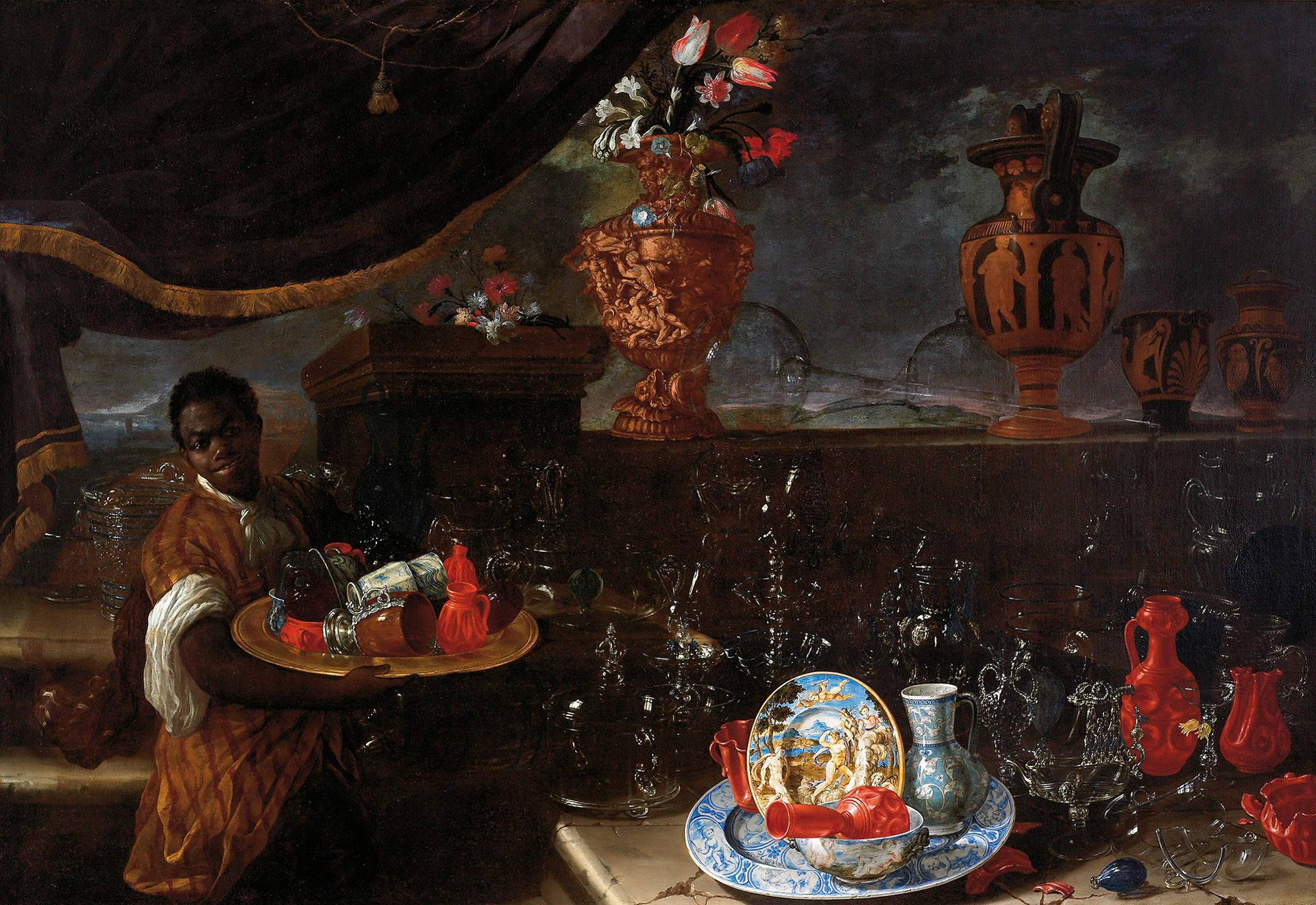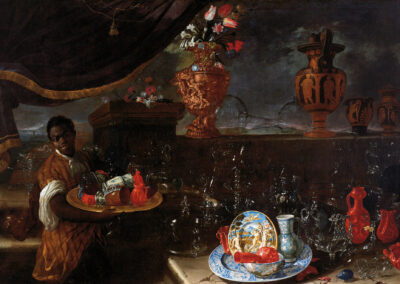In 1716, in the inventory of movable property drawn up on the death of Francisco de Benavides, IX Count of Santisteban, this magnificent work by Giuseppe Recco appears with the following description: "Another large painting with black frame and gilt corner pieces of a black and different Varros and Vidrios". The 1750 inventory entitled "Reason for the linked paintings". he adds, "Jordan's Black Hand Figure...Thus informing us that the servant carrying the golden tray was painted by Luca Giordano, whose collaboration with Recco's workshop is well known and dates back at least to 1669, when Giuseppe Paravagna, Marquis of Noja, paid them both a "...".Still life with fish and a fisherman"(Ferrari-Scavizzi, A203). The Count of Santisteban may have acquired this painting or even commissioned it when he arrived in Italy in 1678, as Viceroy of the Kingdom of Sicily, but it is more likely that he did so on his arrival in Naples in 1687, also as Viceroy. His first task was to settle the complex will of his predecessor, the Marquis del Carpio, in whose inventory of 1683 Giuseppe Recco is mentioned as "...".pittore del Marchese de los Velez"The painting is dated from 1675 to 1682 (Burke and Cherry, 1997, p. 761), i.e. the period in which the painting is dated.
In full maturity, between 1675 and 1680, Giuseppe Recco, who until then was known for his paintings of marine fauna and flowers, in keeping with the family tradition in which he had been trained, must have surprised us in Naples by painting still lifes such as this one, as splendid as they were hitherto rare in the world of painting in Naples (M. Hilaire-N. Spinosa, 2015, p.286). With a light penetrating laterally from below, he exhibits a singular mastery in the study of transparencies and the refraction of light on different materials. On a broken marble table and other stone supports, he accumulates, in a baroque disorder, a splendid and exotic collection of complicated Venetian glassware, Mexican ceramics or majolica, lying stills and objects from Magna Graecia, which he arranges in successive planes to give the work scenographic depth. This effect is heightened by a blue curtain with gold cords that opens onto a barely visible landscape, hidden by the architectural forms that display the aforementioned objects, among which, in the centre, is a huge bronze vase decorated with a centauromaque. In the lower left corner is the aforementioned figure of the servant who appears dressed in oriental costume, holding a metal tray covered with objects similar to those depicted in the rest of the painting. On the mouth of the jug with blue vegetal decoration, located next to the majolica dish, is the inscription: "Go. Recco.F. 1679".



